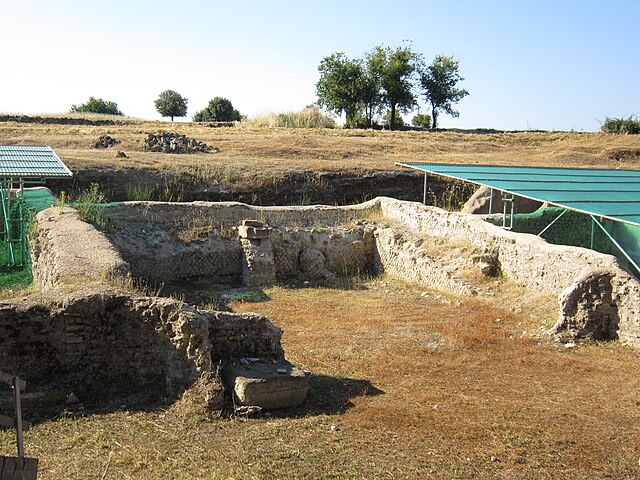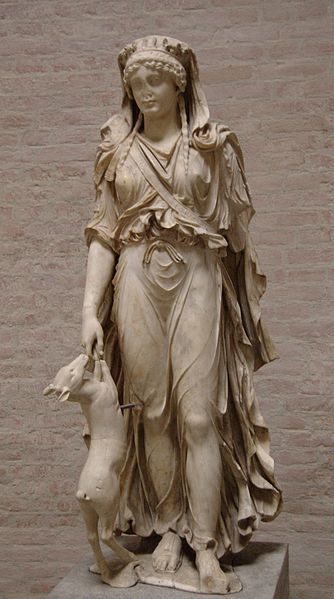Gabii was an ancient city of Latium, located 18 km (11 mi) due east of Rome along the Via Praenestina, which was in early times known as the Via Gabina.
It was on the south-eastern perimeter of an extinct volcanic crater lake, approximately circular in shape, named the Lacus Gabinus, and then during later times called the Lago di Castiglione, "lake of the fortification", after Castiglione, a mediaeval tower erected on the site of the ancient acropolis, or arx, of Gabii. A necropolis is adjacent on that side of the lake. At present, the former lake is entirely agricultural land. The ruins of the ancient city project from the fields next to the cliffs overlooking it, on both sides of the via. A municipium in Roman times, Gabii is currently located in the frazione of Osteria dell'Osa 10 km (6.2 mi) from the comune of Monte Compatri, of which it is a part, in the Province of Rome, Region of Lazio. The site is under new seasonal archaeological excavation.

Ruins in the residential quarter of Gabii
Ancient Latium. Gabii is directly east of Roma, south of Collatia.
Altar of the Twelve Gods from Gabii, dated to 1st century AD (Louvre, Paris).
The "Braschi" Diana, a Roman marble excavated in 1792 by Gavin Hamilton and sold to Luigi Braschi Onesti, who sold it to Ludwig of Bavaria (Glyptothek. Munich)
Not to be confused with Lithium.
Latium, Enric Serra Auqué, 1888. Biblioteca Museu Víctor Balaguer
Bust of Augustus wearing the Civic Crown. Glyptothek, Munich






